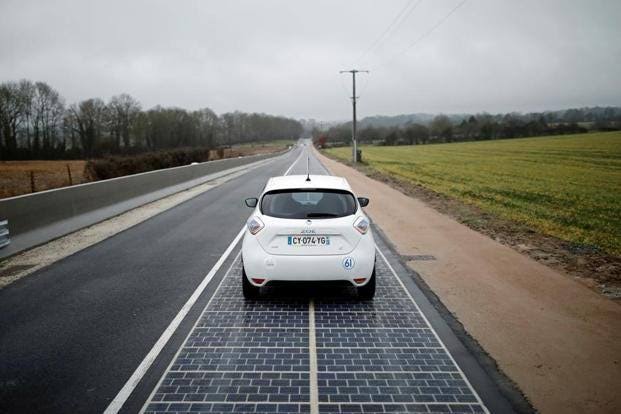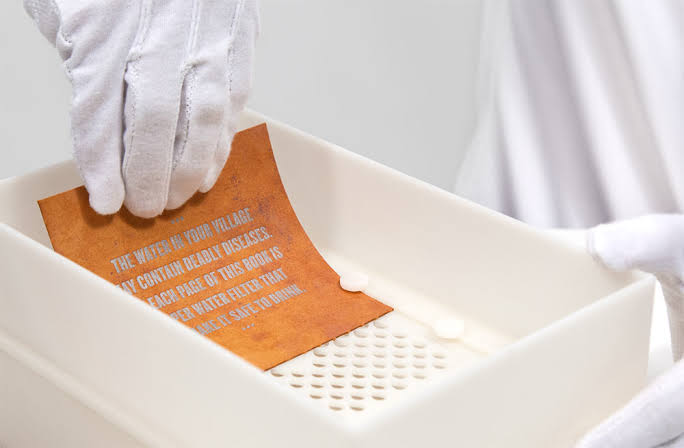As Elon Musk completes his innovation of Twitter into X, his vision is to transform it into an “everything” app where users can communicate, shop, consume entertainment, and more.
He intends the platform to look more like China’s WeChat.
According to Yaccarino, “X is the future state of unlimited interactivity — centered in audio, video, messaging, payments/banking — creating a global marketplace for ideas, goods, services, and opportunities.”

None saw this coming, not even Jack Dorsey, but that’s one intriguing aspect of innovation.
As other sectors embrace new innovations, technological advancements such as wind turbines, photovoltaic cells, concentrated solar power, geothermal energy, ocean wave power, and many more have emerged.
That’s how new innovations are changing the world.
But who are these companies heralding this change with their new innovations?
Examples Of companies that embraced new innovations and its effect on their sectors.
Samsung spending over $17 billion (9% of its annual sales) on R&D in 2021 made it one of the world’s largest spenders on innovation.
The South Korean conglomerate was granted 6,300 US patents in 2022, the most out of any company.
However, many companies worldwide are investing heavily in new innovations and transforming their sectors.
Automotive and Transportation Industry
The automotive industry has seen incredible innovation and mouth-dropping changes in the last few years.

Since autonomous vehicles arrived on the scene, automakers have started examining alternatives to fossil fuels to power cars.
Before now, horses, carriages, and trains were the only means of transportation. However, when cars became available, and Henry Ford introduced the assembly line for mass production, the sector experienced one of the most rapid growth in humanity’s history.
Everything about transportation changed, from personal cars to commercial ones and even the roads.
Tesla Electric Cars
After the first release of the Electric car (which uses lithium-ion battery cells), the Roadster, in 2008, the company has not looked back ever since.
Several innovative features have been introduced, like a self-driving—autopilot system, a large touchscreen interface, and aesthetic design, which was uncommon among cars.
The company has moved to transform other transportation sectors with cybertrucks and semi-trucks.
Uber
Travis Kalanick and Garrett Camp founded Uber in 2009 after finding it hard to order a cab during one winter night.
Their idea of going against traditional taxis to provide a more convenient alternative to customers by connecting riders with drivers through an app changed the system entirely.
Uber has continued to dish out new features such as Uber Eats (food delivery), Uber Copter, Uber Fleet, Uber Freight, and electric bike and scooter rentals.
Zipcar
Zipcar was founded in 2000 by Antje Danielson and Robin Chase. The inspiration behind the idea was to solve the travel needs of the student population in Cambridge.
Fortunately, their local brainchild grew to an international scale.
People can rent a nearby car by the day or by the hour. This approach made car sharing and traveling convenience possible for customers as against the must-have mentality prevalent at the time.
Energy-producing roads
Aside from cars, the roads have experienced a significant upgrade in this sector.
High Energy Systems Ltd started an initiative to generate power from roads in 2009, and now the list is endless.
Repsol, TNO, Dyniqq, Ooms Civiel, Colas, and Eurovia are a few companies that are improving the functions of roads worldwide. It’s no longer just a means of transportation from one point to another but a means of generating electricity.
Such electricity will power street lights, residences, and even the vehicles that use them by using the energy created by cars and from renewable sources.
The first energy-generating bike lane by SolaRoad captures sunlight from its upper surface. It generated 3,000 kWh during its first six months. This electricity can power a house for an entire year.

Entertainment Industry
Netflix Online Streaming
Marc Randolph and Reed Hastings founded Netflix after paying huge late fees for a movie.
Netflix began as a DVD rental service, the industry’s norm then. Still, in 2007, it launched its streaming service, which allowed subscribers to watch TV shows and movies online.
Netflix’s innovation curve grew by producing original content and introducing improved features with personalized recommendations, binge-watching, video streaming, and offline viewing.
Spotify
Some may call it the Netflix of the music industry. Still, Spotify was founded in Stockholm 2006 by Daniel Eck and co-founder Martin Lorentzon.
Amidst the scare of Napster shutting down and stiff competition from Apple and Pandora, Spotify took a bold step and disrupted the industry.
Before now, platforms allowed payment per music, but Spotify allowed Users to listen to music legally and for free. They only paid by switching to a premium version, which is ad-free. Users could stream music on-demand.
Spotify continues to innovate with new features such as personalized playlists and podcasts.
Health care Industry
Healthcare organizations, pharmaceutical, and biotech firms come together to develop medical products and devices with new innovations that helps people live better and healthier lives.
Some of their new innovations are:
Water Filter Book
Statistics show that over 3.4 million people die from water-related ailments annually.
A group of scientists from the University of Virginia created “The Drinkable Book” to eradicate this issue. The book contains coffee filter paper with silver nanoparticles whose ions destroy pathogens like cholera, E. coli, and typhoid.
The book aims at educating people about safe drinking water, sanitation, and hygiene, as well as preventing harmful waterborne diseases by placing the water on each page. Once the liquid passes through the filter, the bacteria count is reduced by over 99.99%.

EVA Bra that detects breast cancer
EVA was invented by a 17 years old Julián Ros Cant when his mother was battling breast cancer. He wanted to detect the most common disease among women, breast cancer, early and effectively.
After being worn 60-90 minutes a week, the bra, in connection with an app on a smartphone, can measure the color, texture, and temperature of the breasts using its PCBiosensors.
Neural networks and unique algorithms examine these data and alert the user if there are any disturbing changes.
EVA bra works more efficiently than self-examination checks, and another similar innovation is the Smart Bra.
UGP Matching medicines and genomes
The field of matching drugs to your DNA is known as pharmacogenomics.
A Kenyan undergraduate named Geoffrey Siwo discovered the United Genomes Project (UGP), an individualized treatment using an open-source DNA database to generate medical discoveries and breakthroughs using open data.
The flaw of traditional medical research is its high cost and time-consuming manner. Also, this method does not support individualized treatment.
Learning about diverse genomes is crucial since different drugs operate differently in your body based on your DNA. Rather than one dose fits all, drugs are given according to your genetic makeup so that you won’t experience allergies or reactions.
Purification of water through aquaponics
Boiling, filtration, distillation, and chlorination are means to purify water. No one thought of aquaponics as a means of purifying water until recently.
Aquaponics is a technique in which farmed fish feces provide nutrients to hydroponically grown plants while also purifying the water.
Fishes devour food and excrete waste, but the plant utilizes this waste, which uses the nutrients to utilize water.
This innovation is helpful in this era of food and water insecurity.
The Internet and other sectors
Google’s Search Engine
Archie, Excite, Infoseek, Yahoo!, and Ask Jeeves were the existing search engines in the 90s till Google disrupted the industry.
These search engines ranked based on searches on keywords. Still, Google transformed it by ranking only relevant pages based on the number of quality backlinks.
Since then, Google has continued innovating with features such as voice search, image search, and personalized search results.
Microsoft
While many have scorned Bill Gates and Paul Allen’s brainchild for enjoying monopoly and lacking innovation, Microsoft has proven innovative with its essential software, range of office products, and gradual innovation of its products that appeal to its customers.
However, Microsoft is not only notable for its product innovation but also for its business model when it changed the business model of Office 365. This saw the company go from selling its Office suite as a product, paid for on a one-off basis, to offering it as a monthly or annual subscription.
Blippar
Blippar, founded in 2011, the pioneer of AR, almost suffered a near death in 2018.
Candy Ventures and Blippar’s founder, Ambarish Mitra, have worked together to restore its fortune.
Blippar is a ground-breaking visual search app that recognizes objects in the real world and then uses AR to bring them to life through fresh content. The app uses machine learning to identify its environment.
The company innovated the entire industry from the Gaming sector, search engines, technology, and even supermarkets. Its primary offering was B2B companies, and till today, it has continued to innovate the future of humanity.
Dollar Shave Club
Michael Dubin broke every aspect of innovation with his Dollar Shave Club.
He disrupted the market leader, Gillette, by breaking off the supply chain and cheaply delivering his products to homes.
His business delivers fresh razors to its members every four weeks for as little as one dollar per month.
Unilever later acquired the company for a reported sum of $1 billion.
Ludlow Traveller suit
The Ludlow Traveller suit from J.Crew is an innovation that helps travelers ensure their suit still looks freshly ironed due to wrinkle resistance.
This saves the significant time and effort of having a suit straightened out after a hectic journey.
Dyson
Sir James Dyson is known as one of the greatest innovators ever.
Dyson developed several other mind-blowing products after producing the world’s first bagless vacuum cleaner. It delved into different industries and produced Ballbarrow, Cyclone, CRO1–the first washing machine with two counter-rotating drums, Air Blade and Air Multiplier, and Zone—a noise-cancelling headphone.
Plastic Blocks for Infrastructure
Peter Lewis, RePlast, and US company ByFusion are examples of companies that use plastic blocks for infrastructure. This machine transforms plastic waste into walls.
The RePlast blocks, unlike traditional concrete, do not require glue or adhesive. Although shaped like regular concrete blocks, they are portable and altered to various forms and densities.
It runs on either gas or electricity and does not require sorting or cleaning.
This innovative solution converts heaps of trash into usable items, crucial in solving the world’s plastic waste problem.
Bakey’s Edible utensils
Another company that aims to solve the issue of plastic waste is Bakeys. This India-based company started the cutlery revolution.
The United States uses about 40 billion single-use plastic utensils, which is 16 times higher when compared globally.
Bakeys created the first single-use edible spoons, forks, and chopsticks by using rice, wheat, and sorghum with ingredients that are vegan, free of preservatives, trans-fat-free, and dairy-free.
This remarkable new innovation will not just alter how we eat but solve the issue of plastic waste forever.
Airbnb
Airbnb was conceived in 2007 when two roommates started renting their living room to conference visitors in San Francisco. In 2008, the pair founded the company.
They provided guests an airbed and breakfast for $80 per night, connecting homeowners with travelers looking for unique and affordable accommodations.
Airbnb has expanded to over 220 countries and continues to innovate with new features such as experiences (where locals offer unique activities to travelers) and luxury home rentals.
Honda’s Shoe Navigation System for Visually Impaired People
Honda merges technology into shoes to allow visually impaired people to navigate the environment more easily.
This gadget connects to the user’s shoe. It works with their smartphone to assist them in locating a particular destination.
Whichever foot vibrates means you’re to work towards that direction. But if both shoes vibrate, the user should continue moving forward.
LG First Rollable TV
The Signature OLED R is the world’s first rollable television to solve mobility.
The electronics company LG introduced a new type of screen that is flexible enough to roll up like a newspaper. This solves the problem of portability that is common among television.
Apple’s iPhone
The iPhone, released in 2007, had several new features like the touch screen interface, visual voicemail, and a built-in web browser, which was uncommon among phones at the time.
Apple’s innovation made customers abandon other phone brands and adopt its iPhone series. Today, there are over 1.36 billion iPhone users around the world.
Apple hasn’t stopped innovating the iPhone with each release, introducing features such as facial recognition, augmented reality, and advanced camera technology.

Amazon Prime
Amazon Prime launched in 2005 with fast and free shipping on millions of items; the offer became enticing with movies, books, photo storage, and exclusive discounts.
Since then, Amazon has continued to innovate with new services such as Amazon Fresh (grocery delivery) and Amazon Go (cashier-less grocery stores) and incorporating Alexa into its system.
3D Printing
In the 1980s, Chuck Hull patented the first ever 3D printer, but Hideo Kodama was credited as its inventor.
3D Printing, which gained wide attention in early 2000, came up with the SLS printer, CAD tools, and the first prosthetic leg.
It has now been used to develop 3D hearing aids and other healthcare applications, and it is adopted in various industries and sectors like aerospace, automotive manufacturing, and architecture.
Bottom Line
Thousands of new innovations are occurring around the world, and it’s going to transform humanity.
We don’t even know what 2030 will look like. Things are going to get old pretty fast.
Indeed, companies that choose the path of innovation will experience economic growth and be our true superheroes.
Companies that emphasizes on new innovations and creativity enjoys the benefit of business innovation because their new innovations excites their customers.

